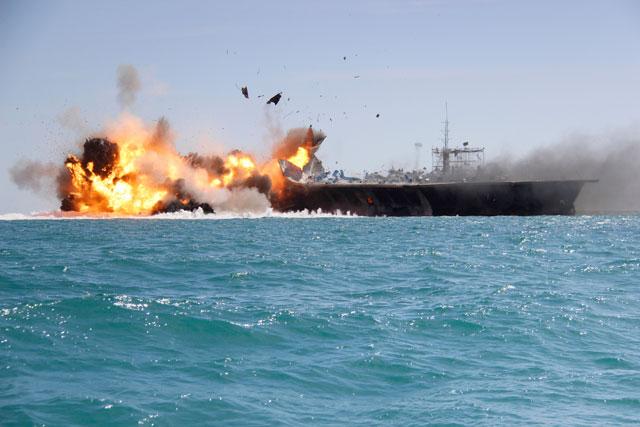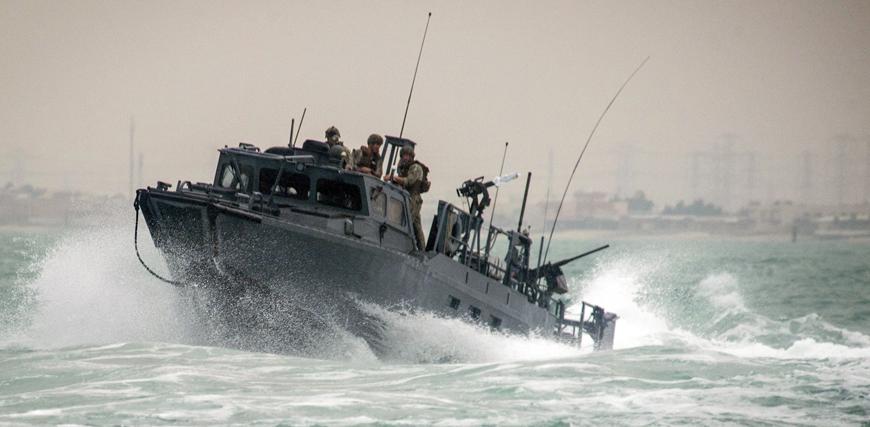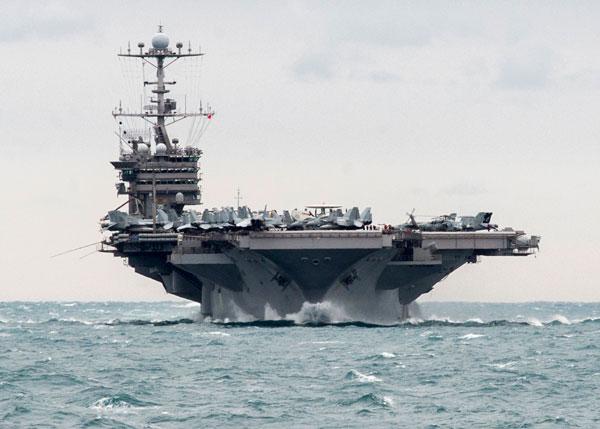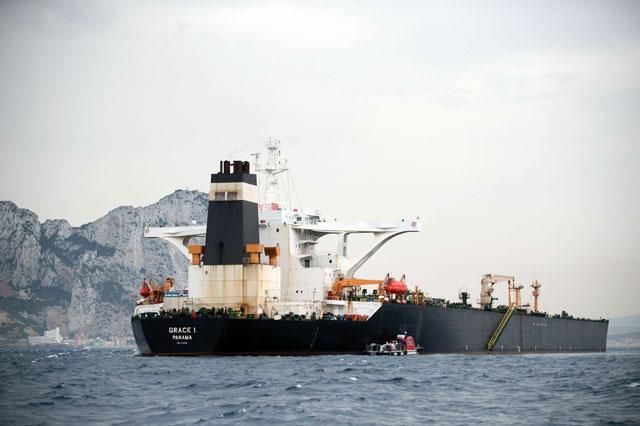You are here
Fake US aircraft carrier the target in latest Iranian drills
By AP - Feb 25,2015 - Last updated at Feb 25,2015

TEHRAN — With rockets roaring and guns blazing, more than a dozen swarming Iranian speedboats assaulted a replica of a US aircraft carrier Wednesday during large-scale naval drills near the strategically vital entrance of the Persian Gulf.
The nationally televised show of force by the country's elite Revolutionary Guard comes just weeks ahead of a deadline for Iran and world powers to forge a historic deal on the fate of the Islamic Republic's nuclear programme.
Iranian live-fire war games are not uncommon. But by simulating for the first time an attack on the ultimate symbol of American naval power, hardliners hoped to send a message that Iran has no intention of backing down to the US — whichever way talks over its contested nuclear programme go.
"American aircraft carriers are very big ammunition depots housing a lot of missiles, rockets, torpedoes and everything else," the Guard's navy chief, Adm. Ali Fadavi, said on state television. A direct hit by a missile could set off a large secondary explosion, he added.
Fadavi last month boasted that his force is capable of sinking American aircraft carriers in the event of war. He previously called carriers easy targets and said Iran naturally wants to sink them.
The drill, named "Great Prophet 9", was held near the Strait of Hormuz, through which about a fifth of the world's oil passes. Iran's regular army carried out naval drills near the strait in December.
Tensions near the strait have caused oil prices to spike in the past — good news for producers like Iran. But traders seemed to take Wednesday's manoeuvres in stride, with benchmark US crude dipping slightly and continuing to hover below $50 a barrel by mid-morning.
State TV showed footage of missiles fired from the coast and the fast boats striking the ersatz American carrier, which appeared to be a replica seen in a shipyard in the southern port of Bandar Abbas last year. The drills also included Guard forces shooting down a drone and planting undersea mines.
Footage aired Wednesday did not show that the assault had managed to sink the mock-up, but it was heavily damaged.
The Guard's chief commander, Gen. Mohammad Ali Jafari, said the drills send a "message of [Iran's] might" to "extraterritorial powers", a reference to the United States.
Commander Kevin Stephens, the spokesman for the US Navy's 5th Fleet in Bahrain, said the Americans were monitoring the drills, which had no effect on maritime traffic. He downplayed the simulated attack on the carrier, saying the US military was "not concerned about this exercise".
"We're quite confident of our naval forces' ability to defend themselves," he said. "It seems they've attempted to destroy the equivalent of a Hollywood movie set."
The US routinely stations at least one aircraft carrier and other warships in and around the Gulf.
It and its allies conduct periodic naval exercises of their own in the region, including ones aimed at countering the threat from undersea mines that could be used to block ship traffic through the strait.
The American aircraft carrier USS Carl Vinson is currently deployed in the Gulf, as is the French carrier Charles de Gaulle. Planes from both vessels are carrying out air strikes against the Daesh group, which has seized roughly a third of Iraq and Syria.
Iran backs Syria's government and is supporting Iraq in its fight against the militants, but it is not part of the US-led international coalition against the extremist group.
The drills were not publicly announced in advance, but the Guard has held similar military exercises around this time of year. The last one, in February 2013, featured "suicide drones" that attack enemies kamikaze-style.
The Guard, which has a 200,000-strong force, is different from the regular army and is charged with protecting the ruling system. It also controls the paramilitary Basij militia, for which there are no precise personnel figures available.
Iran put the Guard in charge of defending the country's territorial Gulf waters in 2008 as Iran turned its attention towards beefing up its naval and air defence forces.
Iran is currently negotiating an agreement over its disputed nuclear programme with the United States and five other world powers in exchange for relief from crippling economic sanctions. The two sides hope to reach a framework agreement next month and a final deal in June.
Western nations have long suspected Iran is covertly seeking a nuclear weapons capability — charges Tehran denies.
In a speech Wednesday in the holy city of Qom, moderate President Hassan Rouhani called for all sanctions to be lifted once a final nuclear accord is reached.
"Our opposite negotiating party has to know that the end of these talks and the result of a deal must be lifting of the entire oppressive and illegal sanctions," he said. "In the negotiations, we will not accept any imposition, humiliation or continuation of the sanctions."
Related Articles
DUBAI, United Arab Emirates — It turned out to be the international crisis that wasn't.Less than a day after 10 US navy sailors were detaine
DUBAI — The US on Wednesday accused Iran of launching a “highly provocative” rocket test last week near its warships and commercial traffic
LONDON — London said Thursday that armed Iranian boats tried to "impede" a UK supertanker before being warned off by a British warship in a


















